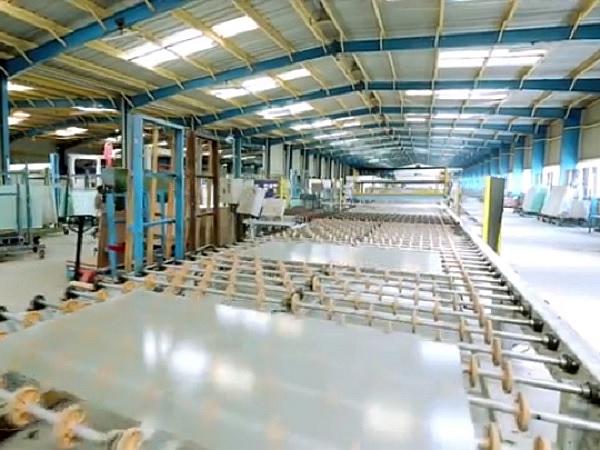In the late 19th century, a German glassmaker by the name of Otto Schott developed what was then a revolutionary new type of glass: It included boric oxide, differentiating the product from the soda-lime-based glass products on the market.
This unique material became known as borosilicate glass or, simply, boro glass. Today, because of its durability and resistance to chemical changes, borosilicate glass manufacturers have been successful in making it the glass of choice for laboratories, high-end restaurants and wineries.
But how is Borosilicate glass manufactured differently? What is the process of glass fabrication that is used to make it the raging success it is today? Let’s find out!
Table of Contents
What makes Borosilicate Glass different from other types of glass?
Common glass, such as window panes and everyday kitchen drinking glasses, is typically a silicate glass that consists of sand, sodium-carbonate and limestone. The addition of boric oxide with silica is what differentiates borosilicate glass.
During the glass fabrication process, Borosilicate Glass Manufacturers add 5-13% boric oxide, along with the usual ingredients typically used in glassmaking — quartz, sodium carbonate, and aluminum oxide which imbues the glass with its unique qualities.
The resulting resistance to high temperatures makes it suitable for various applications involving heat and heat transfer, whether manufacturing telescopes and other types of precision optics or creating high-powered lighting products, such as LED lights and lights for use in the film industry.
And, of course, most household glass cookware is made from borosilicate glass, as dishes must be able to move from the oven to the refrigerator or vice versa in a short period of time; Borosilicate glass manufacturers have to ensure that the quality stands up to these temperature extremes during the glass fabrication process so that it can be used across industries with great versatility.
When it comes to chemical laboratory equipment and process plant components, the major benefits that will have you loving borosilicate glass are as follows:
-
Optical Clarity
It’s clear to see why glass is a good solution when it comes to visibility (how could we resist this pun). Compared to the array of plastics, metals and other materials of construction, glass fabrication provides a smooth surface that offers an unobstructed view of what is going on inside the equipment, enhancing the level of observation in any process.
Some Borosilicate glass manufacturers also add sectrans coating, an optional covering to the glass surface for its protective properties against scratches, blows and splintering.
-
Easy Cleanability
The anti-stick, nonporous surface provided by borosilicate glass manufacturers makes it a popular choice for GMP compliant applications. And its transparency allows you to see when equipment needs to be cleaned without the need for interrupting the process and performing an internal inspection.
-
Corrosion Resistance
Similar to the properties of glass-lined steel, Borosilicate glass fabrication provides unsurpassed corrosion resistance to water, neutral and acidic solutions, concentrated acids and acid mixtures, and to chlorine, bromine, iodine and organic substances. Its resistance to chemical attack is superior to that of most metals and other materials, even during prolonged periods of exposure and at temperatures above 100 °C.
There are only a few chemicals which can cause noticeable corrosion of the glass surface – hydrofluoric acid, concentrated phosphoric acid and strong caustic solutions at elevated temperatures. However, at ambient temperatures, caustic solutions up to 30% concentration can be handled by borosilicate glass without difficulty.
-
Thermal and Chemical Resistance
Borosilicate Glass Manufacturers add silica and boron dioxide during the glass fabrication process, both of which are known for chemical and thermal resistance properties. On the contrary, soda-lime glass is made from silica, sodium dioxide, and calcium oxide, which make it durable only at normal temperatures.
Even the proportion of silica in Borosilicate is much higher (80%) than soda-lime glass (69%) due to which it is less prone to breakages. The mixture of chemicals used by Borosilicate Glass Manufacturers binds it tightly as a result of which it can withstand a much higher melting point.
It also has a higher resistance to acids and hence, ideal for holding acidic and alkaline solutions. It keeps the chemicals uncontaminated and pure. It does not release harmful substances into the liquid it is holding.
-
Structural Integrity due to Low Thermal Expansion
Because borosilicate glass doesn’t expand like ordinary glass, there is a smoother transition between temperatures as well as the ability to withstand different temperatures at the same time. Borosilicate glass has an extremely low coefficient of linear expansion (3.3 x 10–6 K–1). Additionally, the low thermal expansion coefficient eliminates the need for expensive measures to compensate for thermal expansion resulting from changes in temperature.
This becomes especially significant in the layout of long runs of glass pipeline, ensuring a high level of structural integrity. For this reason, borosilicate glass manufacturers are preferred in the construction of pressure equipment.
At Swastik Enterprises, we are veterans in glass fabrication and specifically in being industry leaders in Borosilicate Glass Manufacturing.
With state-of-the-art manufacturing equipment and a broad selection of glass materials, our team has the knowledge, skills, and tools necessary to accommodate nearly any glass part needed. Our extensive glass fabrication capabilities ensure we can complete all steps of any customer project under one roof.
